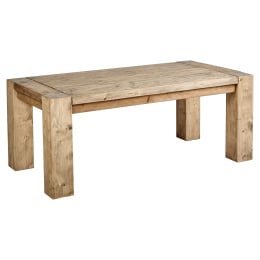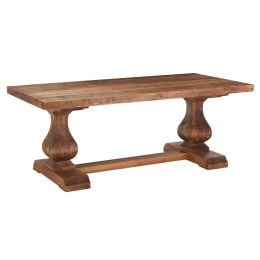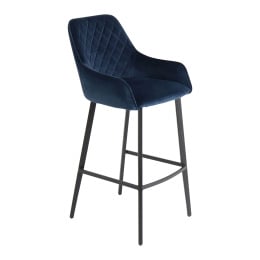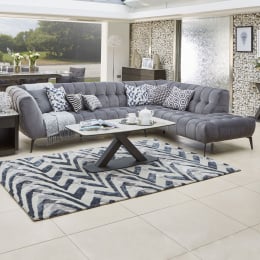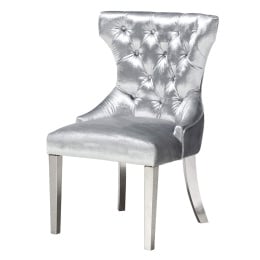Sofa and Chair Buying and Care Guide




Sofa and Chair Buying
Taking time to consider your own tastes in style and comfort will ensure many happy years with your new purchase from Housing Units.
This guide will help you consider the options availableand help you find the perfect match.
Choosing your new sofa
Firstly, take some time to consider the shape, colour and style of your room. It is important that you choose something which will not only fit in terms of colour but also size. Housing Units has a large selection of varying shapes and sizes to go with all rooms.
Consideration should also be given to the amount of use you intend for your new sofa. Some options would not suit a home where the sofa is in use for many hours every day. Our sales team are on hand to listen to your needs and steer you in the right direction.
It’s worth noting that items of furniture placed in direct sunlight will fade. This is normal and where possible try to position furniture so that it is not directly in the line of sight of your windows. This is particularly important when placing items in a conservatory where sunlight can be quite intense.
Choosing the right shape, support and comfort
Please do ask questions about the sofas on display as they are all different in some way. Our highly trained sales team are here to answer your questions and help you find a suitable sofa to match your individual lifestyle needs.
It is important to consider the level of comfort you are seeking from your new sofa. Think about the amount of maintenance and the dressing required to keep your purchase looking it’s best. Sofa dressing is the way in which you need to plump and rotate the seats and cushions to maintain its overall look and style, much like a making a bed. Our handy 'Dressing a fabric sofa' and 'Dressing a leather sofa' videos give you an easy to follow demonstration on how to dress your sofa.
Where options on the comfort are available they will usually be as follows:
Foam
This gives the firmest feel and retains its looks best with minimal maintenance. If you prefer your sofa to always look in shape this is the best option for you to choose. Please be aware that over time the foam will soften and will lose volume.
Fibre
If you prefer a softer ‘sit’ then do consider a fibre-filled option. Cushions will need to be plumped/manipulated daily to maintain the correct look, so it is important to consider if this is something you will be happy to do.
Feathers
Where available, a feather-filled option provides the ultimate level of comfort with a very soft ‘sit’ but again will require daily plumping/manipulating to retain its look.
Recliners
Many of our sofas can be ordered as a recliner for even greater relaxation. Options are available for either a manual or electric design (it may be worth checking where the nearest plug socket is if you intend to order an electric recliner). The tailoring on these products is more flexible to allow the chair to move.


Choosing a leather sofa/chair
Leather is a truly fantastic covering for a sofa or chair that will change over time. It is important to remember that each hide is different and various treatments of leather can give several looks. Buying different items at different times may also result in a different batch of leather being applied so it is important to consider which pieces you need now and order these together. Buying pieces to match later may result in shading and texture differences.
Corrected grain leather is very durable and a great addition to the family home. Aniline leather is a very soft leather that shows off the natural features of the hide but is unlikely to be suitable for a family home (particularly with small children and pets). Semi-Aniline leather offers a better option for family use.
Please be aware due to the fact that leather is a natural product, scars, marks and branding are entirely normal and to be expected. In fact, these are what gives your furniture its beautiful and unique characteristics and have no bearing on the wear of the leather. After delivery, the leather will stretch and crease with use and cushions will soften. This process is normal and will make your sofa even more comfortable to sit on. We recommend using a leather care kit on a regular basis to keep your furniture in top condition.
Regular direct contact of body/hair oils and cosmetics on leather can cause colour loss, staining, cracking and peeling. Care should be taken to avoid these products coming into contact with the surface of the leather. Aniline and Semi-Aniline leathers should be wiped with a dry clean cloth on a weekly basis to remove any dirt or dust. A damp cloth should be used on a corrected grain leather sofa.
Leather care kits are available to purchase in store.


Choosing a fabric sofa/chair
The options here start with either fixed or removable covers. Removable covers are professional dry clean only in most cases (check the instructions first) and are usually casual in their appearance. Fixed fabric covers are not designed to be removed and therefore, cannot be washed.
The choice of fabrics is huge in terms of colour, texture and appearance. Options include hard wearing micro fibres, velvets, chenilles and woven designs. Please do ask questions of our sales team to find out which are best suited to your taste and needs.
Please be aware that a crushing and piling effect is common on velvet and chenille sofas, this is perfectly normal. Some fabric sofas (chenilles in particular) do show alternative appearances in different lights and certain fabrics will also show patches/shading where the pile has been rubbed. This is normal and should not be viewed as a fault. If this is something you would not be comfortable with then a more hard-wearing fabric choice would be better.
Fabric sofas should be vacuumed on a weekly basis to prevent any build-up of dust and dirt. Cushions should also be removed and vacuumed underneath. Certain fabrics can be more prone to bobbling than others. We recommend using a fabric shaver to remove these bobbles on a regular basis.
Your Furniture Buying Checklist
Measure carefully!
Before you order, please make sure your chosen sofa will fit your room and can be manoeuvred into your house through the front door (or rear) and any hallways/landings. Once your furniture has been ordered in store, we can’t accept your cancellation without a charge. If you live in a flat/apartment, please make this known to the sales person so we can help you choose something appropriate in terms of weight and size. If you live in the North West we offer an access check service but please be aware that this may take a few days to arrange and so may delay your order slightly.
Try before you buy and ask questions
Spend as much time as you like sitting on any of our sofas and ask as many questions as you like. We love to listen to your individual needs so we can assist you in making the right choice
A note regarding the interiors of your sofa
Please be aware that every sofa will lose some density in the first few months of use and will continue to do so over the course of its life (up to 25% can be expected). Your new sofa will not sit exactly the same as the model on display to begin with but will adjust over time with use.
Cushions should be rotated, turned and repositioned on a regular basis to ensure that some do not deteriorate quicker than others. If the cushions cannot be removed, we recommend that each seat is used equally and that you do not sit in the same spot for prolonged periods of time.
Protect you investment with Premier Care
Our Premier Care provides you with 5 years protection for fabric and leather upholstery, cabinet and dining furniture. This covers stains, accidental damage and structural defects. Full details are available upon request.
Top 10 Tips For Caring For Your Furniture
- Don’t place furniture too close to direct heat, air conditioning units or in direct sunlight.
- Make sure the air in your room is not too humid or too dry.
- Always move furniture by lifting. Dragging or pushing can damage fixings and affect stability. Some items of furniture may need to be disassembled before they can be moved.
- Carry stone or travertine table tops vertically, never horizontally to move them.
- Use table mats on all surfaces to protect the finish from hot plates and drinks.
- Never put hot dishes or cups onto a table top or cabinet.
- Take care with sharp objects such as cutlery and pens and avoid dragging crockery across your table.
- Never use tables to support your weight when getting up. Tables are not designed to support the weight of a person.
- Don’t place heavy items on drop down leaves or doors and don’t overload shelves with weight.
- Never rock backwards or stand on dining chairs.



